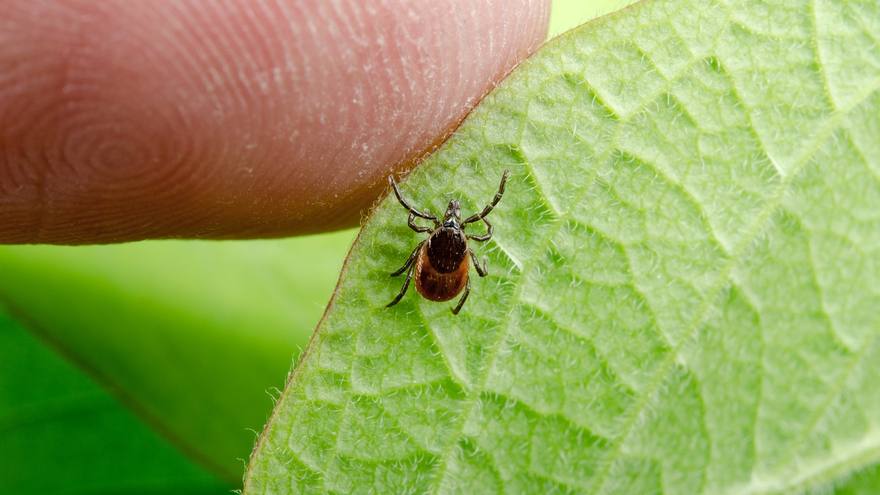
More cases of Lyme disease and other tick-borne illnesses continue to be reported as the geographic range of ticks expands in North America. A changing climate is one of the influencing factors, says the Centers for Disease Control and Prevention.
"The CDC has clearly said that the number of tick-borne infections in the U.S. that get reported to them every year is increasing, and the tick ranges are expanding throughout the U.S.," says Dr. Bobbi Pritt, director of the Clinical Parasitology Laboratory in Mayo Clinic's Department of Laboratory Medicine and Pathology. "Now we may ask then what impact does climate and climate change have on all of this? Well, the answer is, it's complicated."
Watch: Dr. Bobbi Pritt discusses tickborne illnesses.
Journalists: Broadcast-quality sound bites are in the downloads at the end of the post. Please courtesy: "Bobbi Pritt, M.D./Microbiology/Mayo Clinic."
Many factors affect tick-borne diseases.
"And you have to think not just of the tick, but also anything it feeds on, which may be a mouse or it may be a deer. And then you also have to think of the behavior of humans," says Dr. Pritt.
Temperatures, humidity and precipitation play a part, as does the length of a season.
"If we have a mild winter and the snow melts early, then the ticks are out earlier, and we have an earlier start to our season," says Dr. Pritt. "But it's not a straightforward relationship with temperature. If the weather gets too hot and dry, well, the ticks don't like that. They are very susceptible to being dried out. Then they'll retreat into the forest undergrowth, and you'll see a decrease in the risk of tick-borne diseases. It's actually not temperature; it's the length of the season in which the ticks are out and biting."
And that's when human behavior plays a role. The longer the warmer season, the more people who are outside and susceptible to tick exposure and bites.
"Climate change has all of those different factors ― not just simply temperature. There are all sorts of different behaviors of the animals, and of the ticks and migratory birds that carry the ticks when they fly ― and then again what humans are doing," Dr. Pritt says.
Of the hundreds of species of ticks worldwide, less than 60 are known to bite and spread disease to humans. Some of the common ticks in the U.S. include the black-legged tick, brown dog tick, Rocky Mountain wood tick and the Lone Star tick.
Lyme disease is perhaps one of the most well-known tick-borne illnesses. It is caused by bacteria transmitted through the bite of an infected black-legged tick. In the U.S., two types of tick-transmitted bacteria cause the illness: Borrelia burgdorferi and Borrelia mayonii. Lyme disease can be a serious, life-threatening disease, affecting many people.
"There are more than 30,000 cases of Lyme disease reported in the U.S. every year. That number greatly underestimates the true number of cases," says Dr. Pritt. "It's now estimated to be more than 475,000 people infected each year with Lyme disease."
Other tick-borne illnesses in the U.S. include:
- Babesiosis.
- Ehrlichiosis.
- Rocky Mountain spotted fever.
- Anaplasmosis.
- Southern tick-associated rash illness.
- Tick-borne relapsing fever.
- Tularemia.
- Colorado tick fever.
- Powassan encephalitis.
- Q fever.
Prevention remains the best way to avoid tick-borne illnesses.
Dr. Pritt recommends following the ABCs of tick bite prevention:
- Avoid.
"You want to avoid the areas where ticks are found. That could be something as simple as just sticking to the middle of the trail. If you're out on a hike, stay away from the tall grasses where the ticks are likely to be found. Don't walk through the leaf litter and kick up all the leaves. Some ticks may be underneath those leaves. Try to avoid areas where you're going to put yourself at risk," says Dr. Pritt. - (Use) bug spray.
"You want to spray bug spray on any exposed skin. I would recommend something that has at least 30% DEET. We also have alternatives. You can use something with picaridin. There's also now oil of lemon eucalyptus that works almost as well as DEET. And then you could spray permethrin on your clothing," says Dr. Pritt. - Cover up.
"It may be too hot to completely cover up, but if you can, wearing clothing that covers your skin is going to prevent ticks from biting that exposed skin. Something as simple as tucking your pants into your socks as you're hiking through the woods could be an effective way to prevent tick bites."
Read more about the work of Dr. Pritt and the Mayo Clinic Laboratories:
"Rare Lyme disease-causing bacteria spotted on routine blood films."
____________________________________
For the safety of its patients, staff and visitors, Mayo Clinic has strict masking policies in place. Anyone shown without a mask was either recorded prior to COVID-19 or recorded in a nonpatient care area where social distancing and other safety protocols were followed.
Related Articles







